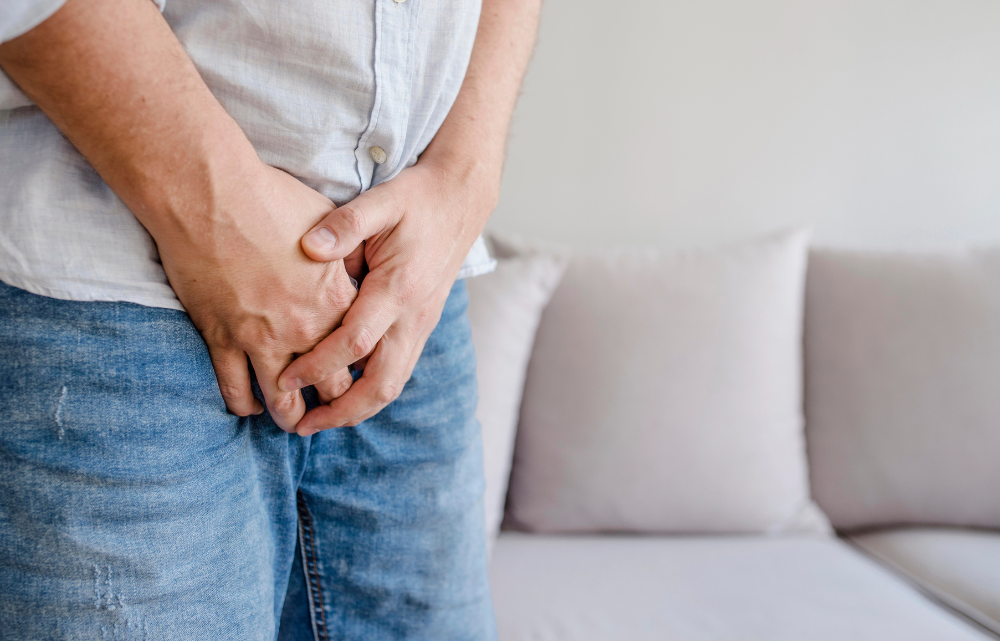Feeling constantly tired, losing motivation, or noticing a drop in your sex drive? These aren’t just signs of getting older; they could be symptoms of low testosterone. As men age, it’s normal for hormone levels to shift, but in many cases, those shifts are more significant than they should be. Left unaddressed, low testosterone can affect everything from your performance at the gym to your confidence in the bedroom.
The good news is that with the right diagnosis and treatment, you can take back control of how you feel, look, and live. Whether you’re 40 or 60, understanding the signs of low testosterone and getting expert support can help you regain your strength and improve your quality of life. If you’re based in Valley Village or the Los Angeles area, working with a trusted men’s health specialist like Dr. Michael Bazel can be a game-changer.
What Is Testosterone and Why It Matters
Testosterone is the key male hormone that fuels much of what makes you feel like yourself. It’s responsible for sex drive, sperm production, muscle growth, red blood cell formation, and bone density. It also impacts mood, energy, and mental clarity. In short, it is not just about libido; testosterone plays a vital role in nearly every system of your body.
Men’s testosterone levels naturally decline with age, about 1% each year starting in their early 30s. While that may not sound like much, the cumulative effect over a decade or two can be dramatic. For some men, this decline happens faster or earlier than expected, leading to a condition known as low testosterone or hypogonadism.
Recognizing the Signs of Low Testosterone (Low T)
Many men live with low testosterone for years without realizing it. That’s because the symptoms often creep in gradually and are easy to attribute to stress, a busy lifestyle, or simply aging. Here are some of the most common red flags:
- Fatigue or chronic lack of energy
- Low sex drive or reduced sexual satisfaction
- Erectile dysfunction or difficulty maintaining erections
- Decrease in muscle mass and strength despite regular exercise
- Unexplained weight gain, especially increased abdominal fat
- Mood swings, irritability, or symptoms of depression
- Trouble focusing or experiencing mental fog
- Hair thinning or hair loss
- Decreased bone density, increasing fracture risk
- Reduced motivation or loss of drive
Experiencing several of these symptoms at once is a strong indicator that it may be time to get your hormone levels checked.
Also Read: Men’s Health Checklist: Essential Screenings to Prevent Serious Illness
What Causes Low Testosterone?
Low testosterone in men can result from a range of factors, and it’s important to understand what might be contributing to it in your case. There are two main categories: primary and secondary hypogonadism.
Primary Hypogonadism
This happens when the testicles don’t produce enough testosterone due to direct issues with the glands themselves. Common causes include:
- Genetic conditions like Klinefelter syndrome
- Testicular injuries or surgeries
- Mumps or other infections affecting the testicles
- Damage from chemotherapy or radiation
Secondary Hypogonadism
This occurs when the brain, specifically the hypothalamus or pituitary gland, fails to signal the testicles to produce testosterone. Causes may include:
- Pituitary tumors or abnormalities
- Obesity or metabolic syndrome
- Type 2 diabetes
- Chronic stress or sleep apnea
- Certain medications, such as opioids or steroids
- Excessive alcohol or substance use
In many cases, low testosterone is linked to lifestyle factors that are manageable with professional support.
Diagnosing Low Testosterone
Getting a proper diagnosis is the first step toward feeling like yourself again. A men’s health specialist like Bazel will begin with a full review of your symptoms and medical history, followed by a physical exam and blood tests.
- Total testosterone is usually measured in the morning, when levels are at their highest
- Free testosterone may be tested if total testosterone is borderline
- Additional labs may include hormone panels, thyroid function, and PSA levels for prostate health
Because hormone levels can fluctuate, doctors often recommend a second test before making a diagnosis. That ensures accuracy and helps tailor the most effective treatment plan.
Testosterone Treatment Options for Men
If your test results confirm low testosterone, there are several evidence-based treatment options to help restore your levels and improve your overall well-being.
Testosterone Replacement Therapy (TRT)
TRT is the most common and effective approach to treating low testosterone. It helps replenish the hormone in your body to bring levels back into the optimal range. Bazel offers personalized TRT programs for men in Valley Village and throughout Los Angeles.
TRT can be administered in several ways:
- Intramuscular injections (weekly or biweekly)
- Topical gels are applied daily to the skin
- Patches that deliver testosterone slowly through the skin
- Long-acting subcutaneous pellets
- Oral formulations in select cases
The benefits of TRT often include improved energy, stronger libido, better muscle tone, sharper focus, and a general boost in confidence and mood. It’s not uncommon for men to feel more like themselves within a few weeks of starting treatment.
That said, it’s crucial to monitor therapy with regular check-ins and lab work. Possible side effects can include increased red blood cell counts, fluid retention, or changes in PSA levels. Some men may also experience reduced fertility, especially younger men planning to have children.
Alternatives to TRT
Not every man is a candidate for testosterone replacement. Some prefer options that stimulate the body’s natural production of testosterone, such as:
- Clomiphene citrate, which can boost testosterone without impacting fertility
- HCG therapy, which supports testicular function and sperm production
- Nutritional or lifestyle changes to support hormone health
The right treatment depends on your goals, lab results, and overall health profile.
Also Read: The Most Common Respiratory Diseases Affecting Men’s Health
Lifestyle Habits That Support Healthy Testosterone Levels
Whether or not you choose medical treatment, adopting supportive habits can play a big role in your recovery and long-term vitality. Consider the following strategies:
- Exercise regularly: Strength training and HIIT workouts help boost testosterone
- Improve your diet: Eat whole foods rich in zinc, magnesium, and healthy fats
- Lose excess weight: Belly fat, in particular, is linked to lower T levels
- Get quality sleep: Poor sleep disrupts hormone production
- Manage stress: Chronic stress increases cortisol, which suppresses testosterone
- Cut back on alcohol and avoid tobacco: Both negatively affect hormone levels
When combined with expert guidance, these changes can enhance the effects of treatment and help you sustain results over time.
When to Seek Help
If you’ve been pushing through fatigue, struggling with motivation, or avoiding intimacy due to low energy or performance, it’s time to stop settling. Low testosterone is not just about sex, it’s about how you show up in every part of your life.
It’s important not to attempt self-treatment through supplements or mail-order testosterone. Hormones are powerful, and managing them correctly requires medical expertise. Dr. Bazel offers compassionate, science-backed care for men dealing with low testosterone and related issues.
He’ll help you get the answers you need and develop a personalized treatment plan that fits your body and your goals, whether that means TRT, natural alternatives, or a full wellness approach.
Take Back Your Strength
Low testosterone doesn’t have to define the way you feel, move, or live. If you’ve noticed the signs of fatigue, low libido, weight gain, or loss of drive, it’s time to take action. With the right treatment and expert guidance, you can rebuild your energy, confidence, and performance.
If you’re in Valley Village or the Los Angeles area, connect with a men’s health specialist like Dr. Bazel, who knows what it takes to get you back on track. Your comeback starts now.


